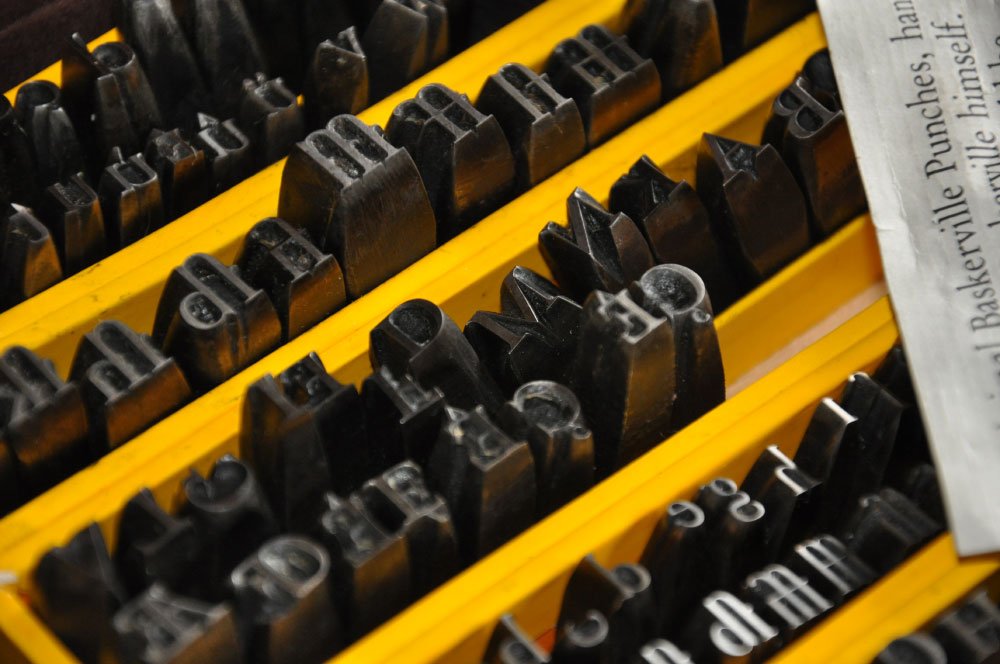Small Performances
Society member Dr Caroline Archer’s fascinating three-year research project, Small Performances, was launched last month by the Centre for Printing History and Culture. Caroline writes about it for us below.
‘Small Performances: investigating the typographic punches of John Baskerville (1707-75) through heritage science and practice-based research’
In January 2024 we launched ‘Small Performances’, a three-year research project which is funded by the Art & Humanities Research Council and led by myself (Centre for Printing History and Culture, Birmingham City University), Marcos Martinon-Torres (Department of Archaeology, University of Cambridge), Maciej Pawlikowski (Cultural Heritage Imaging Laboratory, Cambridge University Library) and Ann-Marie Carey (School of Jewellery, Birmingham City University)
Although the Baskerville typeface is familiar to billions of readers and users of standard computer software across the world, the story behind its creation by John Baskerville (1707-75) is much less widely known. This is in spite of the fact that he was England's foremost printer, and what he called his ‘small performances’ in typeface design ‘went forth to astonish all librarians of Europe’.
This interdisciplinary project seeks to make a substantial contribution to the history of printing technology. At its heart is the exceptional collection of typographic punches designed, cut, and used at Baskerville's workshop in Birmingham, which are now held at Cambridge University Library. Individually engraved in steel, punches were the first of three stages in the manufacturing of metal type - one that posed challenges in both materials and design - and therefore they preserve otherwise inaccessible information that can be unlocked through scientific study.
Bringing together printing historians, heritage scientists, craftspeople, and type designers around the AHRC-funded Cambridge Heritage Science Hub (CHERISH), we will reconstruct eighteenth-century punch-cutting techniques using pioneering scientific and artisanal methods. Our approach will involve microscopy, chemical analyses, 3D modelling and advanced imaging in the laboratory, but also practical experimentation involving jewellers, engravers, blacksmiths, and typeface designers who will help disentangle the craft while also learning historical techniques that may be of use in their own trade.
The project will materialise as a new and essential chapter in the history of world technology, and as a novel form of research engagement among academics, practitioners, and laypeople, made visible through 3D models, digital editions, new typeface designs, and practical and creative workshops. This work will transform our understanding of the collection of Baskerville punches and benefit current industrial and craft applications, as well as educational projects and our knowledge of Baskerville and his significance as a typeface designer and cultural figure.

